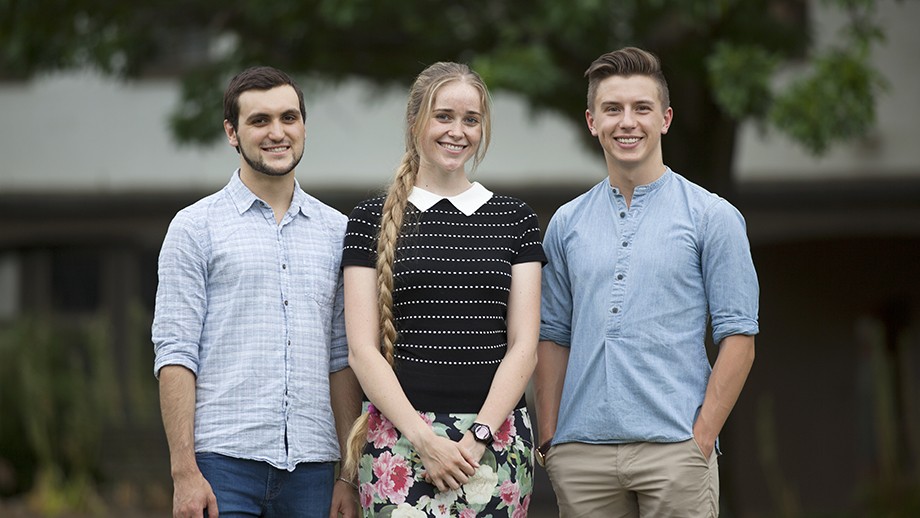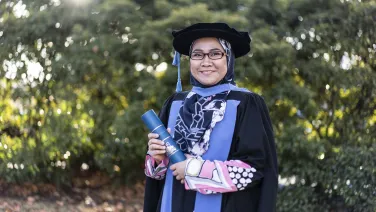Three science PhD students named among 22 Westpac Future Leaders for 2017
Three ANU postgraduate science students have received a financial boost that will enable them to do further research into their areas of expertise for the next three years.
The three PhD students have received Westpac Future Leaders Scholarships, which are offered to students who have the potential to make a difference to Australia's future in the areas of technology and innovation, strengthening Australia-Asia ties, and enabling positive social change.
As part of the initiative, the students receive up to $120,000 in funding over a period of two to three years.
The scholarships involve a nine month leadership development program and an international experience for a period of up to six months.
Simon McKenzie is studying his PhD in Computational Chemistry at the ANU Research School of Chemistry. He'll spend his six months helping a research group at Cambridge University develop their software.
"My PhD is about coming up with quantum mechanical computational simulations for chemical experiments. Chemical experiments can often be quite time consuming, dangerous and expensive, so if you can do them on a computer it's much better," he said.
"By being able to replace experiment with simulation, it will enable new developments in novel drugs, solar cells, and materials. I will implement all of this theory that we've developed into software which will be available to scientists and engineers around the world to be able to make these discoveries."
Henry Orton, who finished his Bachelor of Philosophy in Science with Honours at ANU in 2016, will be doing his PhD in Chemistry over the next three to four years. Henry's area of interest involves nuclear magnetic resonance technology.
"When I found out I received the scholarship I was pretty excited," Henry said, adding that the scholarship gives him the finances to be able to pursue his PhD in the best possible way.
Henry says he will use his six month experience to travel overseas to Europe or the US to gather expertise in his area.
"MRI scanners use a very large magnet to observe the nuclei in the human body. I use the same technology but with a much larger magnet. This allows me to have the resolution to look at individual molecules and to image them.
"If you can see an individual molecule and how it interacts then you can understand exactly how to interact with it and that's the foundation of all the processes in humans, including diseases such as cancer."
Toby Hendy will begin her PhD in Physics in August at the conclusion of her honours in Physics. She also wants to spend six months at Cambridge University.
Toby's research area relates to physics and biology, and looks at the mechanical properties of plant cells and how they respond to pressure.
"Diseases infect plant cells by applying pressure to the surface before penetrating. The plant cell tries to strengthen to protect itself from that invasion. I'm looking at how the plant cell stiffens or rearranges itself to become a more resistant material.
"From a biology point of view, if we can understand nature's response, we can use that to our advantage and make more resistant varieties of crop and prevent crops from being infected with disease."
CEO of the Westpac Bicentennial Foundation Susan Bannigan said the Future Leaders come from diverse fields and backgrounds with a common goal - to shape a better future for all Australians.
"From researching spider venoms as potential next generation treatments to combat drug resistance in parasites; to innovating the use of 3D printing to repair ruptured ear drums - the Westpac Future Leaders Scholarship has attracted an incredibly high caliber of talented and driven individuals."


